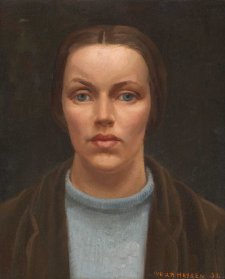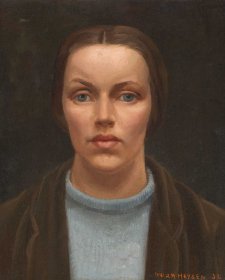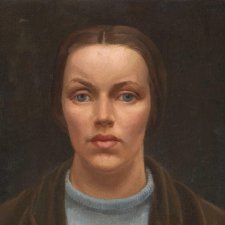Emily Hilda Rix left Australia in March 1907, having trained for three years at the National Gallery School. She, her sister Elsie and their widowed mother Elizabeth proceeded from London – where Hilda studied at the New Art School – to Paris, where she attended art classes at the Académie Delecluse and the Grande Chaumière. She and Elsie spent several exhilarating periods in Tangier, Morocco, where she made many striking paintings and drawings reflecting her passion for costume. In the expatriate artists’ colony of Étaples, where she spent summers between 1910 and 1914, she painted rustic personalities, buildings and gardens bathed in the soft light of the region. Returning to London at the outbreak of the First World War, by 1916 she had lost her sister and her mother to typhoid fever. She married an Australian soldier, George Nicholas, but he was killed in France within weeks of their wedding. Henceforth, she signed her pictures with his name. She returned to Australia in 1918, settling in Mosman. Having spent 1924-1926 in Paris and England, where several of her paintings were acquired for public collections, in 1928 she began a new life as the wife of Edgar Wright, owner of the grazing property Knockalong, near the town of Delegate on the Southern Monaro. There, she designed a free-standing French-style studio, into which she moved her paintings, drawings, costumes and mementoes of foreign lands. She continued to paint, and to exhibit intermittently in Sydney and Melbourne, until the mid-1940s. However, she was a vehement opponent of Modernism, had few friends in the art world and failed to gain the critical approbation she believed, based on her French experience, to be her due. For her last fourteen years, physical decrepitude prevented her from painting. The studio still stands on Wright family land, its contents largely undisturbed since the death of the artist in 1961.







